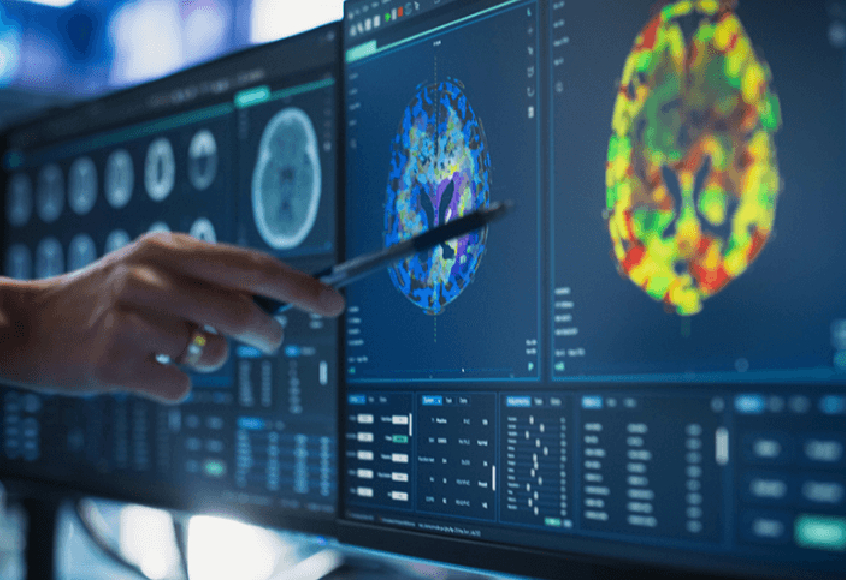Contact us for more information about our research, programs, and initiatives.
We apply quantitative and computational approaches to understand brain function and its impact on human health, and develop strategies to repair or enhance neural systems.
| Researcher | Description |
|---|---|
| Laura D. Lewis Website: Lewis Lab |
The Lewis lab integrates neuroscience and engineering to develop advanced methods for multimodal imaging, and applies them to understand the neurobiological origins of sleep. To enable measurement of previously undetectable aspects of brain function, Laura Lewis and her lab develop advanced MRI and multimodal approaches to measure neural, vascular, and CSF physiology. The lab applies these tools to identify neural circuits that regulate sleep, and explore neurophysiology in aging, sleep disorders, and hormonal modulation. Projects integrate computational methods, imaging technology, and neuroscience to identify how the brain creates a spectrum of arousal and attentional states, as this state-dependent flexibility is essential to human cognition. |
| Lonnie G. Petersen |
As an integrative physiologist, my research is rooted in cardiovascular and exercise physiology and focuses on pressure, perfusion, and metabolic regulation of the brain. My line of research falls in two parallel tracks: 1) a spin-up track which is focused on space and aviation physiology including investigating effects of spaceflight on the human bodyand developing countermeasure to maintain human health during long-term spaceflight and extraterrestial exploration 2) a spin-down track which is focused on medical device and technology development, and applying knowledge gained in space for patients on Earth. |
| Polina Golland Website: Golland Group |
Polina’s primary research interest is in developing novel techniques for biomedical image analysis and understanding. She particularly enjoys working on algorithms that either explore the geometry of the world and the imaging process in a new way or improve image-based inference through statistical modeling of the image data. She is interested in shape modeling and representation, predictive modeling, and visualization of statistical models. |
| Emery N. Brown Website: Neuroscience Statistics Research Lab |
Using combinations of likelihood, Bayesian, state-space, time-series and point process approaches, a primary focus of the research in my laboratory is the development of statistical methods and signal-processing algorithms for neuroscience data analysis. We use a systems neuroscience approach to study how the state of general anesthesia is induced and maintained. To do so, we are using fMRI, EEG, neurophysiological recordings, micro dialysis methods and mathematical modeling in interdisciplinary collaborations with investigators in HST, the Department of Brain and Cognitive Sciences at MIT, Massachusetts General Hospital, and Boston University. |
| Kwanghun Chung Website: Chung Lab |
The Chung Lab is an interdisciplinary research team devoted to developing and applying novel technologies for integrative and comprehensive understanding of large-scale complex biological systems. Specifically, they develop a host of methods that may enable rapid identification of multi-scale functional networks and interrogation of their system-wide, multifactorial interactions. |
| John Gabrieli Website: Gabrieli Lab |
Professor Gabrieli’s research focuses on the neural mechanisms of memory, cognition, and emotion in the human brain, and how those mechanisms are disrupted in neurological and psychiatric disorders. |

